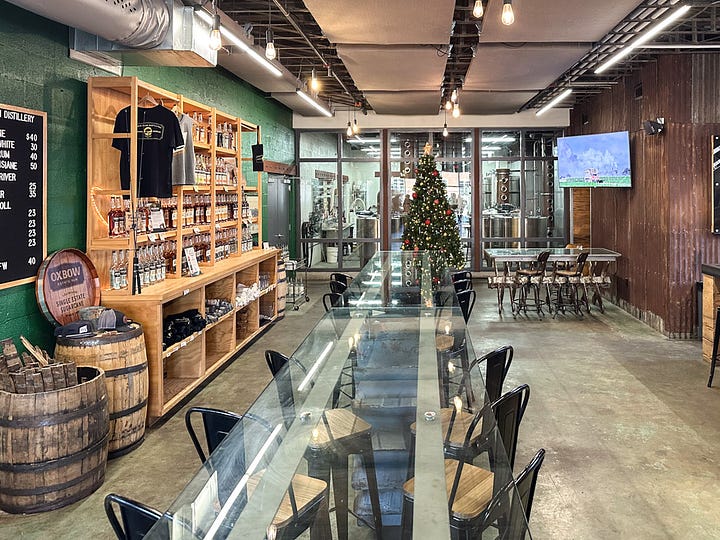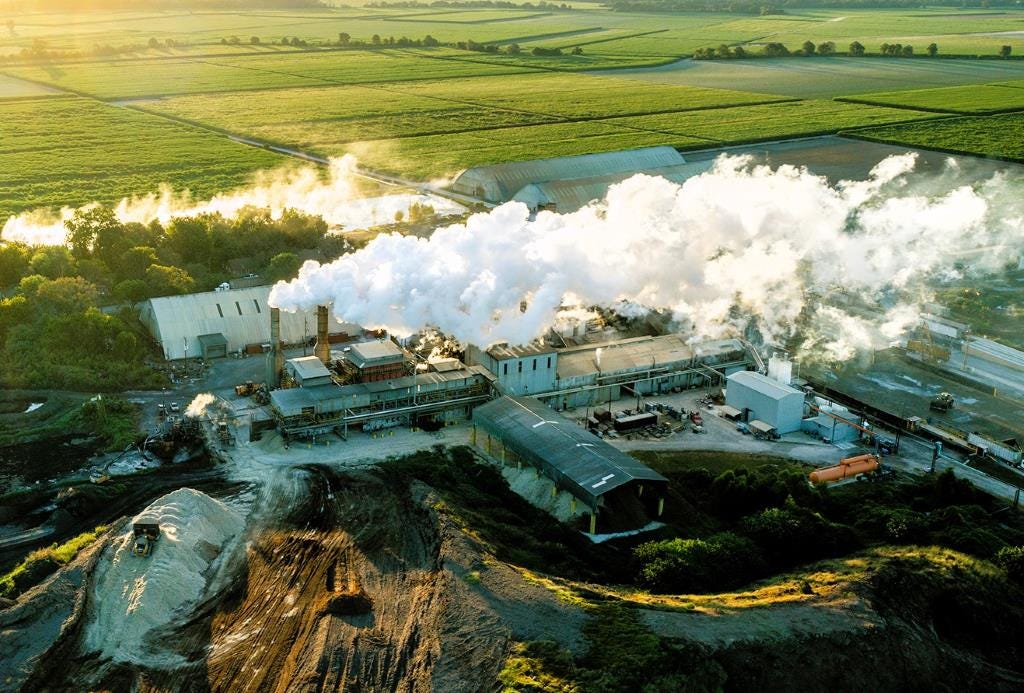Louisiana Rum - Part 2 - Oxbow Rum Distillery
This story is the second in a series covering today’s Louisiana rum industry and its producers. For an introduction to Louisiana rum and the advantage the state’s distillers have over most other states, see Louisiana Rum - Part 1 - Overview.
Today, we’re looking at Oxbow Rum Distillery in Baton Rouge. Louisiana. Oxbow is unique among the state’s rum distillers because of its direct family connection to its sugarcane source material from Alma Sugarcane Plantation. Alma is among Louisiana’s largest sugar mills, producing 500 million pounds of raw sugar and 10 million gallons of molasses annually. Yes, that’s HUGE, and a story for another time.
Olivia Stewart, Oxbow’s president, is the great-great granddaughter of George Pitcher, who bought Alma in 1859. However, it wasn’t until 2016 that the Stewart family entered the rum business. Olivia’s cousin, Walter Tharp, started Cane Land Distilling in 2016, sourcing his molasses and cane juice from his family’s sugar mill, i.e., Alma. Walter later turned over Cane Land’s operations to his uncle, David Stewart, who owns and oversees Alma’s operations. In 2019, Cane Land was renamed to Three Roll Estate to avoid a trademark issue with Cane Island Rum, a Dutch company owned by a former E&A Scheer blender.
Just a year after renaming the distillery and brand, the COVID pandemic struck. Olivia, David’s daughter, was living in New York City and chose to ride out the lockdowns back home in Louisiana with her family. As the pandemic stretched on, Oliva took over an increasingly large share of Three Roll’s management, eventually assuming the role of president as well as Oxbow’s public face of the brand.
In 2022, Olivia rebranded Three Roll Estate to Oxbow Rum. Per Wikipedia, an oxbow lake is a U-shaped lake or pool that forms when a wide meander of a river is cut off, creating a free-standing body of water. Alma resides adjacent to False River, an oxbow formed by the Mississippi River.
Oxbow Rum Distillery Operations
Given the tight connection between Alma Plantation and the Oxbow distillery, you might imagine the distillery resides within Alma’s vast complex. However, Oxbow is in Baton Rouge, 13.5 miles southeast of Alma and 1000 feet from the Mississippi River. From a visitor traffic perspective, locating the distillery in a more urban setting than the very rural Lakeland, LA, makes sense. Like many craft distilleries, Oxbow’s tasting room also serves cocktails, and an outdoor patio area cleverly incorporates artifacts from Alma, including gigantic gears.




According to Stewart, about 25 percent of the rum production is cane juice rum, and the remaining 75 percent uses A-grade molasses from Alma, as you’d expect. Alma presses cane juice for Oxbow on a small mill completely separate from the massive 18-roller setup used to crush sugarcane at an enormous scale. Once a week during harvest season (October-December), a 6000-gallon tanker pulls up to the small mill and is pumped full of fresh cane juice. Before the truck departs for the 30-minute drive to Oxbow, yeast is pitched into the tank to initiate fermentation. (Technically this small mill is its own DSP registered with the US TTB.)
Oxbow uses dry yeast from Lallemand. The typical fermentation lasts 3-5 days, and there are separate protocols (yeast varietals, temperature, and pitch rate) for cane juice and molasses rums.
Oxbow’s distilling setup is a 500-gallon stripping still and a 250-gallon spirit still with a 5-plate rectifier. However, when making cane juice rums, both are used as stripping stills to process the cane juice ferment as quickly as possible. Only after the harvest is complete is the intermediate distillate (“low wine”) distilled in the spirit still. Typical final distillation ABV is between 60 to 70 percent ABV for cane juice rum, and 80 to 90 percent ABV for molasses rum.
Most of Oxbow’s distillate goes into new American oak at 62.5 percent ABV (125 proof), i.e., the same aging requirements that bourbon follows. Oxbow’s “False River” spiced rum ages in ex-bourbon casks. Recently, the distillery has started experimenting with other cask types including calvados and various wine varietals.



At the time of this writing, Oxbow’s rum lineup consists of:
Small Batch White Rum (unaged, molasses, 45 percent ABV)
Barrel Aged Straight (molasses, 47.5 percent ABV)
Rhum Louisiane Cane Juice Agricole (unaged, cane juice, 45 percent ABV)
Rhum Louisiane Single Barrel (cane juice, 45 percent ABV)
As a final note, while the word “agricole” appears on the labels of the latter two expressions, those who might take offense should note that Louisiana hasn’t been a French territory since 1803, so isn’t subject to French labelling regulations. It might sound flip, but I’ve covered this topic in-depth in a prior story: What’s Allowed to be Called Agricole Rum? However, Stewart tells me that she and other Louisiana rum distillers are looking to formalize a cane juice rum made from Louisiana sugarcane.












“Typical final distillation ABV is between 60 to 70 percent ABV for cane juice rum, and 80 to 90 percent ABV for molasses rum.”
Is there any reason for this, or is just a business choice?